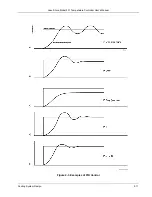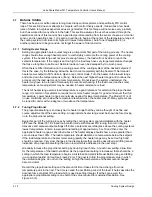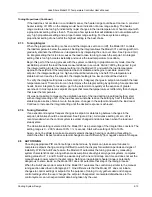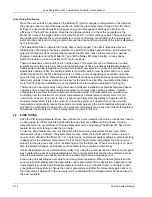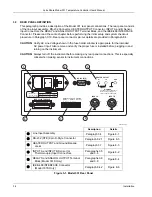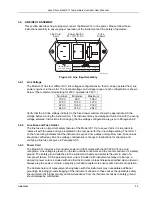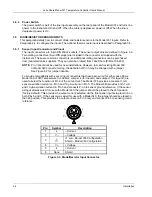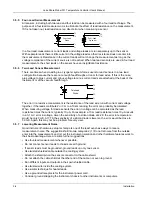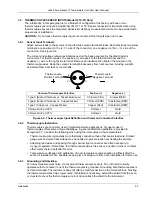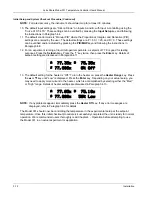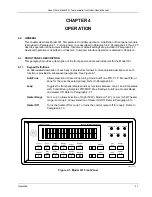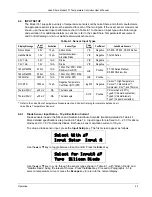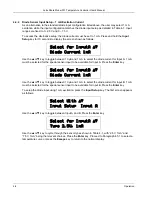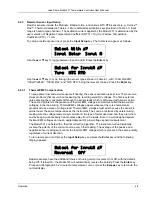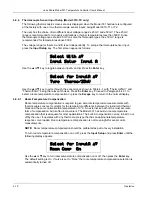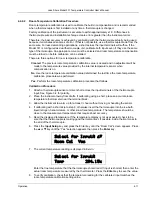
Lake Shore Model 331 Temperature Controller User’s Manual
3.8
ANALOG OUTPUT (Model 331S Only)
The Analog Output available on the rear panel of the Model 331S is a voltage output that can be used
for monitor and control applications. Their most basic function is a temperature monitor where it puts
out a voltage that is proportional to temperature. It can be configured to monitor the output of a linear
equation which allows the user to select an offset and gain. The analog output can be controlled
manually by the user for any application that requires a programmable voltage source or as mentioned
above as Control Loop 2. Refer to Paragraph 4.16 and the ANALOG command in Chapter 6.
The analog output is a variable DC voltage source that can vary from –10 V to +10 V. The resolution of
the analog output is 0.3 mV or 0.003% of full scale. The output can source up to 100 mA of current
providing a maximum of 1 W of power. It can drive a resistive load of no less than 100
Ω
. The output is
short protected so the instrument is not harmed if the heater resistance is too small. It is not
recommended because the additional load on instrument power supplies causes noise on internal
circuits.
The output for the analog outputs is available from positions 7 and 8 of the detachable RELAY and
ANALOG OUTPUT Terminal Block. See Figure 3-5. The terminal marked positive (+) is the output
voltage terminal, the terminal marked negative (–) is the ground and is attached to chassis ground
inside the instrument.
It is not recommended to attach the analog output ground to a ground outside the instrument. The
output should be read by an instrument with an isolated or differential input wherever possible.
Connecting to an external ground can cause noise in the analog output voltage or the sensor input
measurement. If this cannot be avoided, try to keep the chassis of the two instruments at the same
potential with a ground strap.
3.9
RELAYS (Model 331S Only)
The Model 331S has one high and one low relay. They are most commonly associated with the alarm
feature. The relays can also be placed in manual mode and controlled directly by the user from the front
panel or over the computer interface. Refer to Paragraph 4.15 and the RELAY command in Chapter 6.
Normally Open (N.O.), Normally Closed (N.C.), and Common (COM) contacts are available for each
relay. All contacts (including common) are isolated from the measurement and chassis grounds of the
instrument. If a relay is inactive (Off), it will be in its normal state of open or closed. When the relay is
active (On), it will be in the opposite state.
Terminal Block Connector
Lake Shore P/N 106-739
1
2 3
4 5
6 7 8
Use screwdriver to
lock or unlock wires
Insert wire
into slot
Slides into slot at
rear of Model 331
Pin
Description
Pin
Description
1
2
3
4
Relay 1 – Normally Closed (NC)
Relay 1 – Common (COM)
Relay 1 – Normally Open (NO)
Relay 2 – Normally Closed (NC)
5
6
7
8
Relay 2 – Common (COM)
Relay 2 – Normally Open (NO)
Loop2/Analog Voltage Output – Hi (+)
Loop2/Analog Voltage Output – Lo (–)
Figure 3-5. RELAYS and ANALOG OUTPUT Terminal Block
3-10
Installation


